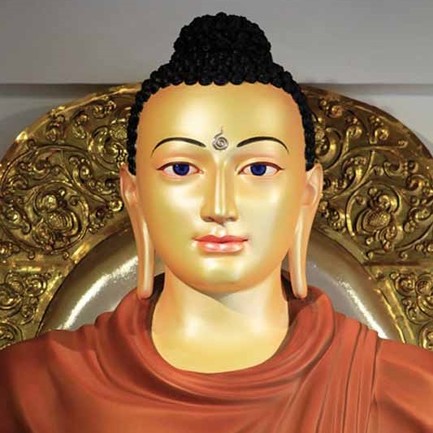For
The Welfare, Happiness, Peace of All Sentient and Non-Sentient Beings and for them to Attain Eternal Peace as Final Goal. KUSHINARA NIBBANA BHUMI PAGODA-It is a 18 feet Dia All in 116 CLASSICAL LANGUAGES Through At WHITE HOME 668, 5A main Road, 8th Cross, HAL III Stage, Prabuddha Bharat Puniya Bhumi Bengaluru Magadhi Karnataka State PRABUDDHA BHARAT
White Pagoda with may be a table or, but be sure to having above head
level based on the usual use of the room.
Dr B.R.Ambedkar thundered “Main Bharat Baudhmay karunga.” (I will make India Buddhist)
All Aboriginal Awakened Societies Thunder ” Hum Prapanch Prabuddha Bharatmay karunge.” (We will make world Prabuddha Prapanch
The
Buddha died at the age of 80 by the banks of a river at Kusinari in
Prabuddha Bharat. Lying on his side with his head propped up by his hand
and a
serene expression, the Buddha passed into Nibbana. This moment is
captured in the image of the Reclining Buddha which can be seen in many
statues throughout Thailand, most famously at Wat Po in Bangkok. Nibbana
is a blissful state with no suffering and no reincarnation.

Meditation VR - Thailand, Chiang Mai & Pai Nature (360 VR Video)
enjoy this episode of ‘Meditation VR’ in which we select the most
relaxing scenes from each destination we’ve visited in this longer
format type of vi…
in Buddha’s own words with chants, songs, music Virtual Reality 3D 360
degrees Panoromic view for Discovery of Awakened One with Awareness
Universe for the welfare, happiness, and peace for all societies.
enjoy this episode of ‘Meditation VR’ in which we select the most
relaxing scenes from each destination we’ve visited in this longer
format type of video.
Gorilla is an Amsterdam based virtual reality production studio. We aim
to create the most immersive, enthralling experiences imaginable. We
want to give you new experiences and take you places you have never
been. We want to tell stories like you’ve never seen and heard them
before. We want to share with you our dreams.
make 360° video productions that are perfected to be experienced in
high end VR headsets (like Gear VR and Oculus) as well as Cardboard and
YouTube/Facebook 360. Our background as filmmakers give us the advantage
of knowing how to tell a story and really captivate your audience.
Obviously te rules are different in VR but still there is much that we
gain from having this experience.
Tipitaka in Buddha’s own words with chants, songs, music Virtual Reality
3D 360 degrees Panoromic view for Discovery of Awakened One with
Awareness Universe for the welfare, happiness, and peace for all
societies.
VR 360 MEDITATION | WHO ARE YOU? | PART I
you for listening! Here are some extra tools for you. All rates have
been reduced during Covid-19 temporarily. Part II VR 360 Experience:
https://www.a…
in Buddha’s own words with chants, songs, music Virtual Reality 3D 360
degrees Panoromic view for Discovery of Awakened One with Awareness
Universe for the welfare, happiness, and peace for all societies.
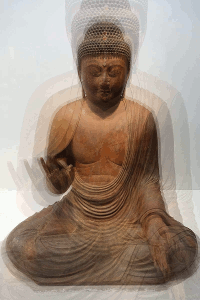
Buddhanussati: Verses of Recollection on the Buddha l Guided Meditation
Colombo Dhamma Friends
Meditation serves an important task in maintaining wholesome thoughts to
calm the mind. An awakened mind is able to comprehend clearly; the Four
Noble Truths.
serves an important task in maintaining wholesome thoughts to calm the
mind. An awakened mind is able to comprehend clearly; the Four Noble
Truths…
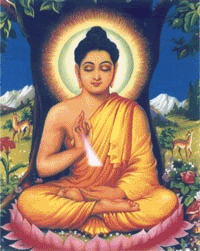
Buddhanussati: Meditation Recollecting the Qualities of the Buddha
meditations taught by the Buddha is the practice of recollecting the
qualities of the Buddha and his enlightenment. By remembering all of
the special qualities of the Buddha we gain much needed confidence in
his enlightenment and the spiritual practice he gave us. One of the most
beautiful explanations of this meditation comes from the Mahanama Sutta
in the Numerical Discourses. Mahanama was an elder in the Buddha’s
birth family and a faithful disciple. This passage comes from one of the
many times he would go to get advice from the Buddha:
|
|
“There is the case where
you recollect the Tathagata: ‘Indeed, the Blessed One is worthy and rightly self-awakened, consummate in knowledge and conduct, well-gone, an expert with regard to the world, unexcelled as a trainer for those people fit to be tamed, the Teacher of divine and human beings, awakened, blessed.’ At any time when a disciple of the noble ones is recollecting the Tathagata, his mind is not overcome with passion, not overcome with aversion, not overcome with delusion. His mind heads straight, based on the Tathagata. And when the mind is headed straight, the disciple of the noble ones gains a sense of the goal, gains a sense of the Dhamma, gains joy connected with the Dhamma. In one who is joyful, rapture arises. In one who is rapturous, the body grows calm. One whose body is calmed experiences ease. In one at ease, the mind becomes concentrated. “Mahanama, you should develop this Mahanama Sutta: To Mahanama (2)
translated from the Pali by Thanissaro Bhikkhu |
|
guided meditation we use at our monastery to help us remember the
meaning of all of the Buddha’s qualities. It is helpful if we can first
memorize the list of his nine qualities in Pali and their English
meaning. That can form the framework to remember the specific meaning of
each quality.
If we have not memorized
this list and the meaning of each quality, we can easily glance down at a printed copy until we have them committed to memory. |
Nammo tassa bhagavato arahato sammāsambuddhassa!
Homage to the Blessed One, the Worthy One, the Fully Enlightened One!
Arahant – Fully Accomplished One
I go for refuge to the Supreme Buddha, my great Teacher.
The Supreme Buddha eradicated sensual desires, and was entirely free of sensual desires.
The Supreme Buddha eradicated hatred, and was entirely free of hatred.
The Supreme Buddha eradicated delusion, and was entirely free of delusion.
The Supreme Buddha eradicated all defilements and all unwholesome thoughts, speech and actions.
The Supreme Buddha did not commit any misdeeds, even in secrecy.
The Supreme Buddha eradicated the desire for seeing forms.
The Supreme Buddha eradicated the desire for hearing sounds.
The Supreme Buddha eradicated the desire for smelling odors.
The Supreme Buddha eradicated the desire for tasting flavours.
The Supreme Buddha eradicated the desire for touching tangibles.
The Supreme Buddha eradicated the desire for cognizing thoughts.
The Supreme Buddha guarded sense faculties, controlled sense faculties, tamed sense faculties and restrained sense faculties.
My great Teacher, the Supreme Buddha completely destroyed all taints and was fully purified in body, speech and mind.
Sammāsambuddho – Fully Enlightened
The Supreme Buddha, alone, understood perfectly the truth of suffering, without anyone’s help.
The Supreme Buddha, alone, eradicated the origin of suffering, without anyone’s help.
The Supreme Buddha, alone, attained the cessation of suffering, without anyone’s help.
The Supreme Buddha, alone, developed the path leading to the cessation of suffering, without anyone’s help.
The Supreme Buddha, alone, realized the Four Noble Truths, without anyone’s help.
The
Supreme Buddha understood the Four Noble Truths as they really are, in
their three phases (satya ñana, krutya ñana, kruta ñana) and twelve
aspects, without the help of a teacher.
The Supreme Buddha, my great
Teacher, is the one and only Teacher, who alone realized the Four Noble
Truths, escaped suffering, and achieved real happiness.
Vijjācaranasampanno – Perfect in True Knowledge and Conduct
Iddhivida
ñāna: The Supreme Buddha had the supernatural powers of creating
whatever he wished (having been one, to become many; having been many,
to become one; to appear and disappear; to move unhindered through walls
and mountains, as though through space; to dive in and out of the
Earth, as though it was water; to walk on water, as though it was Earth;
seated cross-legged, to travel in the air like birds; to touch and
stroke the Sun and Moon). Powerful and mighty was the Supreme Buddha, so
as to exercise mastery even as far as the Brahma-world.
Dibba sota—Divine
ear: The Supreme Buddha had the ability to hear both divine and human
sounds that were far away, as well as those that were near.
Dibba chakku—Divine eye: The Supreme Buddha had the ability to see even the smallest of things at a great distance by his divine eye.
Paracittavijānana ñāna: The Supreme Buddha had the ability to read others’ minds.
Pubbenivāsānussati ñāna: The Supreme Buddha had the ability to recollect the past lives of beings.
Cutūpapāta ñāna: The Supreme Buddha had the ability to see the passing away and rebirth of beings according to their actions.
Āsavakkhaya ñāna: The Supreme Buddha had the knowledge of the destruction of all taints.
The Supreme Buddha developed excellent psychic powers.
My
great Teacher, the Supreme Buddha had excellent virtue, excellent
concentration, excellent wisdom, excellent mindfulness; extraordinary
effort, courage and determination.
Sugato – Sublime
The Supreme Buddha discovered the correct and clear path, the Noble Eightfold Path.
Following the Noble Eightfold Path, my great Teacher achieved the bliss of Nibbāna.
Lokavidū – Knower of All Worlds
The
Supreme Buddha understood all worlds – the Brahma world, the heavenly
world, the human world, hell, the animal world, the ghost world, and the
titans’ world. The Supreme Buddha understood the origin of all worlds
and escaped from all worlds.
Anuttaro purisadammasārathi – Incomparable Leader of Persons to be Tamed
With
great compassion, loving kindness, and great wisdom, the Supreme Buddha
tamed immoral humans, gods and Brahmas, to be moral and virtuous.
Satthā devamanussānam – Teacher of Gods and Humans
The
Supreme Buddha is the Teacher of gods and humans. The Supreme Buddha
showed wise gods and wise humans the way to end suffering and reach
Nibbāna.
Buddho – Fully Enlightened
Unaided
and unguided by any other, my great Teacher, the Supreme Buddha,
attained the supreme state of Enlightenment and fully realized the Four
Noble Truths. The
Supreme Buddha, with great compassion, expounded
the Dhamma to others without holding anything back, so that they may
understand suffering and achieve real happiness.
Bhagavāti – Blessed One
The Supreme Buddha is the one and only extraordinary, supreme Teacher with all of these great qualities.
These
are the great qualities of the Supreme Buddha, my great Teacher. My
refuge is based on these exceptional qualities and the incomparable
virtue, concentration, and wisdom of the Supreme Buddha.
My
great Teacher has taught us, when a noble son or daughter recollects the
qualities of the Blessed One, the mind of the noble disciple is not
afflicted with sensual desire, with hatred or with delusion. The mind
becomes unshaken towards the Supreme Buddha. With perfect confidence in
the Blessed One, inspiration is gained from the truth of the Dhamma.
Gladness arises in the noble disciple. With gladness towards the Dhamma,
rapture and joy are born. With joy, the body becomes tranquil. With a
tranquil body, the noble disciple feels pleasure. With pleasure, the
mind becomes concentrated. The noble disciple abides recollecting the
great qualities of the Supreme Buddha, the Blessed One, my great
Teacher.
Sādhu! Sādhu! Sādhu!
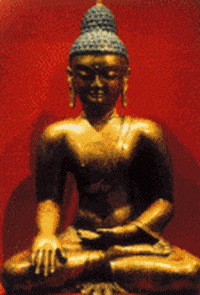

Awakened
Buddha Sutta (SN 22:58)
Some schools of Buddhism teach that there is a
qualitative difference between the liberation of a Buddha and that of an
arahant disciple. This sutta, however, shows that the Buddha saw the
distinction in different terms.
* * *
Near Sāvatthī… “Monks, the Tathāgata—the worthy one,
the rightly self-awakened one, who from disenchantment with form, from
dispassion, from cessation, from lack of clinging (for form) is
released—is termed ‘rightly self-awakened.’ And a discernment-released
monk—who from disenchantment with form, from dispassion, from cessation,
from lack of clinging (for form) is released—is termed
‘discernment-released.’
“The Tathāgata—the worthy one, the rightly
self-awakened one, who from disenchantment with feeling… perception…
fabrication, from dispassion, from cessation, from lack of clinging (for
feeling… perception… fabrication) is released—is termed ‘rightly
self-awakened.’ And a discernment-released monk—who from disenchantment
with feeling… perception… fabrication, from dispassion, from cessation,
from lack of clinging (for feeling… perception… fabrication) is
released—is termed ‘discernment-released.’
“The Tathāgata—the worthy one, the rightly
self-awakened one, who from disenchantment with consciousness, from
dispassion, from cessation, from lack of clinging (for consciousness) is
released—is termed ‘rightly self-awakened.’ And a discernment-released
monk—who from disenchantment with consciousness, from dispassion, from
cessation, from lack of clinging (for consciousness) is released—is
termed ‘discernment-released.’
“So what difference, what distinction, what
distinguishing factor is there between one rightly self-awakened and a
monk discernment-released?”
“For us, lord, the teachings have the Blessed One as
their root, their guide, & their arbitrator. It would be good if the
Blessed One himself would elaborate on the meaning of this statement.
Having heard it from the Blessed One, the monks will remember it.”
“In that case, monks, listen & pay close attention. I will speak.”
“As you say, lord,” the monks responded to him.
The Blessed One said, “The Tathāgata—the worthy one,
the rightly self-awakened one—is the one who gives rise to the path
(previously) unarisen, who engenders the path (previously) unengendered,
who points out the path (previously) not pointed out. He knows the
path, is expert in the path, is adept at the path. And his disciples now
keep following the path and afterward become endowed with the path.
“This is the difference, this the distinction, this the
distinguishing factor between one rightly self-awakened and a monk
discernment-released.”
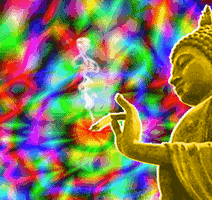
Morning Chanting
DEDICATION
OF OFFERINGS
(Yo
so) bhagavā arahaṃ
sammāsambuddho
To the Blessed One, the Lord
who fully attained perfect
enlightenment,
Svākkhāto yena bhagavatā dhammo
To the Teaching which he expounded so
well,
Supaṭipanno
yassa bhagavato sāvakasaṅgho
And to the Blessed One’s disciples, who
have practised well,
Tammayaṃ bhagavantaṃ
sadhammaṃ sasaṅghaṃ
To these; the Buddha, the Dhamma and the Sangha
Imehi sakkārehi yathārahaṃ
āropitehi abhipūjayāma
We render with offerings our rightful homage.
Sādhu
no bhante bhagavā sucira-parinibbutopi
It is well for us that the Blessed One,
having attained liberation,
Pacchimā-janatānukampamānasā
Still had compassion for later generations.
Ime sakkāre duggata-paṇṇākāra-bhūte
paṭiggaṇhātu
May these simple offerings be accepted
Amhākaṃ dīgharattaṃ
hitāya sukhāya
For our long-lasting benefit and for
the happiness it gives us.
Arahaṃ sammāsambuddho
bhagavā
The Lord, the Perfectly Enlightened and
Blessed One
Buddhaṃ bhagavantaṃ abhivādemi
I render homage to the Buddha, the
Blessed One. (Bow)
(Svākkhāto)
bhagavatā dhammo
The
Teaching so completely explained by him
Dhammaṃ namassāmi
I bow to the Dhamma. (Bow)
(Supaṭipanno)
bhagavato sāvakasaṅgho
The
Blessed One’s disciples who have practised well
Saṅghaṃ
namāmi
I bow to the Sangha. (Bow)
PRELIMINARY HOMAGE
(Handa
mayaṃ buddhassa bhagavato pubbabhāga-namakāraṃ karomase)
[Now let us pay
preliminary homage to the Buddha]
[Namo
tassa] bhagavato arahato sammāsambuddhassa (3x)
Homage
to the Blessed, Noble and Perfectly Enlightened One. (3x)
HOMAGE TO THE BUDDHA
(Handa
mayaṃ buddhābhithutiṃ karomase)
[Now
let us chant in praise of the Buddha]
(Yo
so) tathāgato arahaṃ sammāsambuddho
The
Tathāgata is the Pure One, the Perfectly Enlightened One;
Vijjācaraṇa-sampanno
He is impeccable in conduct and understanding
Sugato
The
Accomplished One
Lokavidū
The
Knower of the Worlds;
Anuttaro purisadamma-sārathi
He
trains perfectly those who wish to be trained
Satthā deva-manussānaṃ
He
is Teacher of devās and humans
Buddho bhagavā
He is Awake and Holy.
Yo imaṃ lokaṃ sadevakaṃ samārakaṃ sabrahmakaṃ
In
this world with its devās, demons and kind spirits,
Sassamaṇa-brāhmaṇiṃ pajaṃ sadeva-manussaṃ sayaṃ
abhiññā
sacchikatvā pavedesi
Its seekers and sages, celestial and human
beings, he has by deep insight revealed the Truth.
Yo dhammaṃ desesi ādi-kalyāṇaṃ
majjhe-kalyāṇaṃ pariyosāna-kalyāṇaṃ
He has pointed out the Dhamma: beautiful
in the beginning, beautiful in the middle, beautiful in the end.
Sātthaṃ sabyañjaṇaṃ kevala-paripuṇṇaṃ parisuddhaṃ
brahmacariyaṃ pakāsesi
He has explained the Spiritual Life of
complete purity in its essence and
conventions.
Tamahaṃ bhagavantaṃ abhipūjayāmi tamahaṃ bhagavantaṃ sirasā namāmi
I
chant my praise to the Blessed One, I bow my head to the Blessed One.
(Bow)
HOMAGE TO THE DHAMMA
(Handa
mayaṃ dhammābhithutiṃ karomase)
[Now
let us chant in praise of the Dhamma]
(Yo
so) svākkhāto bhagavatā dhammo
The Dhamma is well-expounded by the Blessed
One,
Sandiṭṭhiko
Apparent here and now
Akāliko
Timeless
Ehipassiko
Encouraging investigation,
Opanayiko
Leading onwards
Paccattaṃ
veditabbo viññūhi
To be experienced individually by the
wise.
Tamahaṃ
dhammaṃ abhipūjayāmi tamahaṃ dhammaṃ sirasā namāmi
I chant my praise to this Teaching, I bow
my head to this Truth.
(Bow)
HOMAGE
TO THE SANGHA
(Handa mayaṃ saṅghābhithutiṃ karomase)
[Now let us chant in praise of the
Sangha]
(Yo so) supaṭipanno bhagavato sāvakasaṅgho
They are the Blessed One’s disciples who
have practised well,
Ujupaṭipanno
bhagavato sāvaka saṅgho
Who have practised directly,
Ñāyapaṭipanno
bhagavato sāvaka
saṅgho
Who have practised insightfully,
Sāmīcipaṭipanno
bhagavato sāvaka saṅgho
Those who practise with integrity;
Yadidaṃ
cattāri purisayugāni aṭṭha purisapuggalā
That is the four pairs, the eight kinds
of noble beings,
Esa
bhagavato sāvaka saṅgho
These are the Blessed One’s disciples.
Ᾱhuneyyo
Such ones are worthy of gifts
Pāhuneyyo
Worthy of hospitality
Dakkhiṇeyyo
Worthy of offerings
Añjali-karaṇīyo
Worthy of respect;
Anuttaraṃ puññakkhettaṃ lokassa
They give occasion for incomparable goodness
to arise in the world.
Tamahaṃ
saṅghaṃ abhipūjayāmi tamahaṃ saṅghaṃ sirasā namāmi
I chant my praise to this Sangha, I bow my head to this Sangha.
(Bow)
SALUTATION OF THE TRIPLE GEM
(Handa mayaṃ
ratanattaya-paṇāma-gāthāyo ceva saṃvega vatthu-paridīpaka pāṭhañca bhaṇāmase)
[Now
let us chant our salutation of the Triple Gem and a passage to arouse urgency]
(Buddho
susuddho) karuṇāmahaṇṇavo
The
Buddha, absolutely pure, with ocean-like compassion,
Yoccanta-suddhabbara-ñāṇa-locano
Possessing
the clear sight of wisdom,
Lokassa
pāpūpakilesa-ghātako
Destroyer
of worldly self-corruption
Vandāmi
buddhaṃ ahamādarena taṃ
Devotedly indeed, that Buddha I revere.
Dhammo
padīpo viya
tassa satthuno
The Teaching of the Lord, like a lamp,
Yo
maggapākāmata-bheda-bhinnako
Illuminating the Path and its Fruit: the Deathless
–
Lokuttaro
yo ca tadattha-dīpano
That which is beyond the conditioned world
–
Vandāmi
dhammaṃ ahamādarena taṃ
Devotedly indeed, that Dhamma I revere.
Saṅgho
sukhettābhyati-khetta-saññito
The Sangha, the most fertile ground for
cultivation,
Yo diṭṭhasanto sugatānubodhako
Those who have realised Peace, awakened
after the Accomplished One,
Lolappahīno
ariyo sumedhaso
Noble
and wise, all longing abandoned
Vandāmi
saṅghaṃ ahamādarena taṃ
Devotedly
indeed, that Sangha I revere.
Iccevaṃ-ekantabhipūja-neyyakaṃ
This salutation should be made
Vatthuttayaṃ
vandayatābhisaṅkhataṃ
To that which is worthy;
Puññaṃ
mayā yaṃ mama sabbupaddavā
Through the power of such good action
Mā hontu
ve tassa pabhāvasiddhiyā
May all obstacles disappear.
Idha
tathāgato loke uppanno arahaṃ sammāsambuddho
One who knows things as they are has come into
this world; and he is an Arahant, a perfectly awakened being.
Dhammo ca desito niyyāniko upasamiko parinibbāniko
sambodhagāmī
sugatappavedito
Purifying the way leading out of delusion,
calming and directing to
perfect
peace, and leading to enlightenment – this Way he has made known.
Mayantaṃ
dhammaṃ sutvā evaṃ jānāma
Having
heard the Teaching, we know this:
Jātipi dukkhā Birth is dukkha
Jarāpi dukkhā Ageing is dukkha
Maraṇampi dukkhaṃ And death is dukkha;
Soka-parideva-dukkha-domanassupāyāsāpi
dukkhā
Sorrow, lamentation, pain, grief and
despair are dukkha;
Appiyehi sampayogo
dukkho
Association with the disliked is dukkha
Piyehi vippayogo dukkho
Separation from the liked is dukkha;
Yampicchaṃ nalabhati
tampi dukkhaṃ
Not
attaining one’s wishes is dukkha
Saṅkhittena
pañcupādānakkhandhā dukkhā
In brief, the five focuses of identity are
dukkha.
Seyyathīdaṃ These are as follows:
Rūpūpādānakkhandho
Attachment to form,
Vedanūpādānakkhandho Attachment
to feeling,
Saññūpādānakkhandho Attachment to perception,
Saṅkhārūpādānakkhandho Attachment to kamma formations,
Viññāṇūpādānakkhandho Attachment to sense-consciousness.
Yesaṃ pariññāya For the complete understanding of this,
Dharamāno
so bhagavā The Blessed One, in his lifetime
Evaṃ bahulaṃ sāvake vineti
Frequently
instructed his disciples in just this way.
Evaṃ bhāgā ca
panassa bhagavato sāvakesu anusāsanī Bahulā
pavattati
In
addition, he further instructed:
Rūpaṃ
aniccaṃ Form is impermanent,
Vedanā aniccā Feeling is impermanent,
Saññā aniccā
Perception is
impermanent,
Saṅkhārā aniccā Kamma formations are impermanent,
Viññāṇaṃ aniccaṃ Sense-consciousness is impermanent;
Rūpaṃ anattā Form is not-self,
Vedanā anattā Feeling is not-self,
Saññā anattā Perception is not-self,
Saṅkhārā anattā Kamma formations are not-self,
Viññāṇaṃ anattā Sense-consciousness is not-self;
Sabbe saṅkhārā aniccā All conditions are transient,
Sabbe
dhammā anattā ’ti There is no self in the created or the uncreated.
Te mayaṃ All of us
Otiṇṇāmaha-jātiyā
jarāmaraṇena
Are bound by birth, ageing and death,
Sokehi
paridevehi dukkhehi domanassehi upāyāsehi
By sorrow, lamentation, pain, grief and despair,
Dukkhotiṇṇā
dukkhaparetā
Bound
by dukkha and obstructed by dukkha.
Appevanāmimassa
kevalassa dukkhakkhandhassa antakiriyā paññāyethā ’ti
Let
us all aspire to complete freedom from suffering.
(The
following is chanted only by the monks and sāmaneras:)
Ciraparinibbutampi
taṃ bhagavantaṃ
uddissa arahantaṃ sammāsambuddhaṃ
Remembering the Blessed
One, the Noble Lord and Perfectly Enlightened One, who long ago attained
Parinibbāna.
Saddhā agārasmā anagāriyaṃ pabbajitā
We have gone forth with faith from home to
homelessness,
Tasmiṃ
bhagavati brahma-cariyaṃ carāma
And like the Blessed One, we practise the
Holy Life,
Bhikkhūnaṃ*
sikkhāsājīva-samāpannā
Being
fully equipped with the bhikkhus’† system of training.
Taṃ no brahma-cariyaṃ, imassa kevalassa
dukkhakkhandhassa antakiriyāya samvattatu
May
this Holy Life lead us to the end of this whole mass of suffering.
sāmaneras chant: * sāmanerānaṃ † sāmaneras’
(An alternative version of the preceding
section)
Ciraparinibbutampi taṃ
bhagavantaṃ saraṇaṃ gatā
The Blessed One, who
long ago attained Parinibbāna is our refuge
Dhammañca saṅghañca
So
too are the Dhamma and Sangha
Tassa
bhagavato sāsanaṃ yathāsati yathābalaṃ manasikaroma anupaṭipajjāma
Attentively we follow the pathway of that
Blessed One, with all of our mindfulness and strength
Sā
sā no paṭipatti
May then the cultivation of this practice
Imassa kevalassa
dukkhakkhandhassa
antakiriyāya saṃvattatu
Lead us to the end of every kind of
suffering 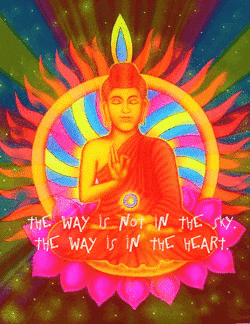
The Blessed,Noble,Awakened One-The Tathagata
Give people time.
Give people space.
Don’t beg anyone to stay.
Let them roam.
What’s meant for you will always be yours. 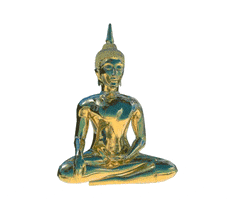
“Hunger is the worst kind of illness.”
“The whole secret of existence is to have no fear.” 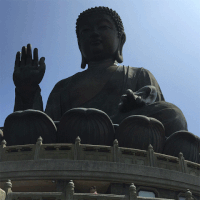
There is no fire like passion
No crime like hatred,
No sorrow like separation,
No sickness like hunger,
And no joy like the joy of freedom. 
Gautama Buddha Zen famously says:
when hungry, eat;
when tired, sleep.
But all things in moderation -
as the Buddha discovered in time to avoid starving to death.

Hunger is the greatest of afflictions; the Aggregates of Being are the principal source of suffering;
If a man thoroughly understand this, he has attained Nibbāna, Supreme Happiness.
Fear
What do Matteyya Awakened One with Awareness
quotes teach us about fear?
Trade your fear for freedom.
“Even death is not to be feared by one who has lived wisely.”
“The whole secret of existence is to have no fear.
Never fear what will become of you, depend on no one. Only the moment you reject all help are you freed.”
“When
one has the feeling of dislike for evil, when one feels tranquil, one
finds pleasure in listening to good teachings; when one has these
feelings and appreciates them, one is free of fear.
”Pain is a Gift
Instead of avoiding it,
Learn to embrace it.
Without pain,
there is no growth
lord, does perception arise first, and knowledge after; or does
knowledge arise first, and perception after; or do perception &
knowledge arise simultaneously?
perception arises first, and knowledge after. And the arising of
knowledge comes from the arising of perception. One discerns, ‘It’s in
dependence on this that my knowledgehas arisen.’ Through this line of
reasoning one can realize how perception arises first, and knowledge
after, and how the arising of
Brahm discusses sutta 9 from the Digha Nikaya: Potthapada Sutta -
States of Consciousness, this is part 1 of 2. Read DN9 here on Sutta
Central: https://suttacentral.net/search?query…
Buddha discusses with a wanderer the nature of perception and how it
evolves through deeper states of meditation. None of these, however,
should be identified with a self or soul”, Sutta Central.

one occasion, the Bhagavā was staying among the Kurus at
Kammāsadhamma,a market town of the Kurus. There, he addressed the
bhikkhus:
This, bhikkhus, is the path that leads to nothing but the purification
of beings, the overcoming of sorrow and lamentation, the disappearance
of dukkha-domanassa, the attainment of the right way, the realization of
Nibbāna, that is to say the four satipaṭṭhānas.
four? Here, bhikkhus, a bhikkhu dwells observing kāya in kāya, ātāpī
sampajāno, satimā, having given up abhijjhā-domanassa towards the world
He dwells observing vedanā in vedanā, ātāpī sampajāno, satimā, having
given up abhijjhā-domanassa towards the world. He dwells observing citta
in citta, ātāpī sampajāno, satimā, having given up abhijjhā-domanassa
towards the world. He dwells observing dhamma·s in dhamma·s, ātāpī
sampajāno, satimā, having given up abhijjhā-domanassa towards the world.

how, bhikkhus, does a bhikkhu dwell observing kāya in kāya? Here,
bhikkhus, a bhikkhu, having gone to the forest or having gone at the
root of a tree or having gone to an empty room, sits down folding the
legs crosswise, setting kāya upright, and setting sati parimukhaṃ. Being
thus sato he breathes in, being thus sato he breathes out. Breathing in
long he understands: ‘I am breathing in long’; breathing out long he
understands: ‘I am breathing out long’; breathing in short he
understands: ‘I am breathing in short’; breathing out short he
understands: ‘I am breathing out short’; he trains himself: ‘feeling the
whole kāya, I will breathe in’; he trains himself: ‘feeling the whole
kāya, I will breathe out’; he trains himself: ‘calming down the
kāya-saṅkhāras, I will breathe in’; he trains himself: ‘calming down the
kāya-saṅkhāras, I will breathe out’.
as, bhikkhus, a skillful turner or a turner’s apprentice, making a long
turn, understands: ‘I am making a long turn’; making a short turn, he
understands: ‘I am making a short turn’; in the same way, bhikkhus, a
bhikkhu, breathing in long, understands: ‘I am breathing in long’;
breathing out long he understands: ‘I am breathing out long’; breathing
in short he understands: ‘I am breathing in short’; breathing out short
he understands: ‘I am breathing out short’; he trains himself: ‘feeling
the whole kāya, I will breathe in’; he trains himself: ‘feeling the
whole kāya, I will breathe out’; he trains himself: ‘calming down the
kāya-saṅkhāras, I will breathe in’; he trains himself: ‘calming down the
kāya-saṅkhāras, I will breathe out’.
he dwells observing kāya in kāya internally, or he dwells observing
kāya in kāya externally, or he dwells observing kāya in kāya internally
and externally; he dwells observing the samudaya of phenomena in kāya,
or he dwells observing the passing away of phenomena in kāya, or he
dwells observing the samudaya and passing away of phenomena in kāya; or
else, [realizing:] “this is kāya!” sati is present in him, just to the
extent of mere ñāṇa and mere paṭissati, he dwells detached, and does not
cling to anything in the world. Thus, bhikkhus, a bhikkhu dwells
observing kāya in kāya.

Furthermore,
bhikkhus, a bhikkhu, while walking, understands: ‘I am walking’, or
while standing he understands: ‘I am standing’, or while sitting he
understands: ‘I am sitting’, or while lying down he understands: ‘I am
lying down’. Or else, in whichever position his kāya is disposed, he
understands it accordingly.
Thus he dwells observing kāya in
kāya internally, or he dwells observing kāya in kāya externally, or he
dwells observing kāya in kāya internally and externally; he dwells
observing the samudaya of phenomena in kāya, or he dwells observing the
passing away of phenomena in kāya, or he dwells observing the samudaya
and passing away of phenomena in kāya; or else, [realizing:] “this is
kāya!” sati is present in him, just to the extent of mere ñāṇa and mere
paṭissati, he dwells detached, and does not cling to anything in the
world. Thus, bhikkhus, a bhikkhu dwells observing kāya in kāya.
Thus he
dwells observing kāya in kāya internally, or he dwells observing kāya
in kāya externally, or he dwells observing kāya in kāya internally and
externally; he dwells observing the samudaya of phenomena in kāya, or he
dwells observing the passing away of phenomena in kāya, or he dwells
observing the samudaya and passing away of phenomena in kāya; or else,
[realizing:] “this is kāya!” sati is present in him, just to the extent
of mere ñāṇa and mere paṭissati, he dwells detached, and does not cling
to anything in the world. Thus, bhikkhus, a bhikkhu dwells observing
kāya in kāya.

bhikkhus, a bhikkhu, while approaching and while departing, acts with
sampajañña, while looking ahead and while looking around, he acts with
sampajañña, while bending and while stretching, he acts with sampajañña,
while wearing the robes and the upper robe and while carrying the bowl,
he acts with sampajañña, while eating, while drinking, while chewing,
while tasting, he acts with sampajañña, while attending to the business
of defecating and urinating, he acts with sampajañña, while walking,
while standing, while sitting, while sleeping, while being awake, while
talking and while being silent, he acts with sampajañña.
he dwells observing kāya in kāya internally, or he dwells observing
kāya in kāya externally, or he dwells observing kāya in kāya internally
and externally; he dwells observing the samudaya o phenomena in kāya, or
he dwells observing the passing away of phenomena\ in kāya, or he
dwells observing the samudaya and passing away of phenomena in kāya; or
else, [realizing:] “this is kāya!” sati is present in him, just to the
extent of mere ñāṇa and mere paṭissati, he dwells detached, and does not
cling to anything in the world. Thus, bhikkhus, a bhikkhu dwells
observing kāya in kāya.

D. Section on Repulsiveness
Furthermore,bhikkhus,
a bhikkhu considers this very body, from the soles of the feet up and
from the hair on the head down, which is delimited by its skin and full
of various kinds of impurities: “In this kāya, there are the hairs of
the head, hairs of the body, nails, teeth, skin, flesh, tendons, bones,
bone marrow, kidneys, heart, liver, pleura, spleen, lungs, intestines,
mesentery, stomach with its contents, feces, bile, phlegm, pus, blood,
sweat, fat, tears, grease, saliva, nasal mucus, synovial fluid and
urine.”
Just as if, bhikkhus, there was a bag having two
openings and filled with various kinds of grain, such as hill-paddy,
paddy, mung beans, cow-peas, sesame seeds and husked rice. A man with
good eyesight, having unfastened it, would consider [its contents]:
“This is hill-paddy, this is paddy, those are mung beans, those are
cow-peas, those are sesame seeds and this is husked rice;” in the same
way, bhikkhus, a bhikkhu considers this very body, from the soles of the
feet up and from the hair on the head down, which is delimited by its
skin and full of various kinds of impurities: “In this kāya, there are
the hairs of the head, hairs of the body, nails, teeth, skin, flesh,
tendons, bones, bone marrow, kidneys, heart, liver, pleura, spleen,
lungs, intestines, mesentery, stomach with its contents, feces, bile,
phlegm, pus, blood, sweat, fat, tears, grease, saliva, nasal mucus,
synovial fluid and urine.”
Thus he dwells observing kāya in kāya
internally, or he dwells observing kāya in kāya externally, or he
dwells observing kāya in kāya internally and externally; he dwells
observing the samudaya of phenomena in kāya, or he dwells observing the
passing away of phenomena in kāya, or he dwells observing the samudaya
and passing away of phenomena in kāya; or else, [realizing:] “this is
kāya!” sati is present in him, just to the extent of mere ñāṇa and mere
paṭissati, he dwells detached, and does not cling to anything in the
world. Thus, bhikkhus, a bhikkhu dwells observing kāya in kāya.
bhikkhus, a bhikkhu reflects on this very kāya, however it is placed,
however it is disposed: “In this kāya, there is the earth element, the
water element, the fire element and the air element.”
as, bhikkhus, a skillful butcher or a butcher’s apprentice, having
killed a cow, would sit at a crossroads cutting it into pieces; in the
same way, bhikkhus, a bhikkhu reflects on this very kāya, however it is
placed, however it is disposed: “In this kāya, there is the earth
element, the water element, the fire element and the air element.”
he dwells observing kāya in kāya internally, or he dwells observing
kāya in kāya externally, or he dwells observing kāya in kāya internally
and externally; he dwells observing the samudaya of phenomena in kāya,
or he dwells observing the passing away of phenomena in kāya, or he
dwells observing the samudaya and passing away of phenomena in kāya; or
else, [realizing:] “this is kāya!” sati is present in him, just to the
extent of mere ñāṇa and mere paṭissati, he dwells detached, and does not
cling to anything in the world. Thus, bhikkhus, a bhikkhu dwells
observing kāya in kāya.

bhikkhus, a bhikkhu, just as if he was seeing a dead body, cast away in
a charnel ground, one day dead, or two days dead or three days dead,
swollen, bluish and festering, he considers this very kāya: “This kāya
also is of such a nature, it is going to become like this, and is not
free from such a condition.”
he dwells observing kāya in kāya internally, or he dwells observing
kāya in kāya externally, or he dwells observing kāya in kāya internally
and externally; he dwells observing the samudaya of phenomena in kāya,
or he dwells observing the passing away of phenomena in kāya, or he
dwells observing the samudaya and passing away of phenomena in kāya; or
else, [realizing:] “this is kāya!”\ sati is present in him, just to the
extent of mere ñāṇa and mere paṭissati, he dwells detached, and does not
cling to anything in the world. Thus, bhikkhus, a bhikkhu dwells
observing kāya in kāya.
bhikkhus, a bhikkhu, just as if he was seeing a dead body, cast away in
a charnel ground, being eaten by crows, being eaten by hawks, being
eaten by vultures, being eaten by herons, being eaten by dogs, being
eaten by tigers, being eaten by panthers, being eaten by various kinds
of beings, he considers this very kāya: “This kāya also is of such a
nature, it is going to become like this, and is not free from such a
condition.
he dwells observing kāya in kāya internally, or he dwells observing
kāya in kāya externally, or he dwells observing kāya in kāya internally
and externally; he dwells observing the samudaya of phenomena in kāya,
or he dwells observing the passing away of phenomena in kāya, or he
dwells observing the samudaya and passing away of phenomena in kāya; or
else, [realizing:] “this is kāya!” sati is present in him, just to the
extent of mere ñāṇa and mere paṭissati, he dwells detached, and does not
cling to anything in the world. Thus, bhikkhus, a bhikkhu dwells
observing kāya in kāya.
bhikkhus, a bhikkhu, just as if he was seeing a dead body, cast away in
a charnel ground, a squeleton with flesh and blood, held together by
tendons, he considers this very kāya: “This kāya also is of such a
nature, it is going to become like this, and is not free from such a
condition.”
he dwells observing kāya in kāya internally, or he dwells observing
kāya in kāya externally, or he dwells observing kāya in kāya internally
and externally; he dwells observing the samudaya of phenomena in kāya,
or he dwells observing the passing away of phenomena in kāya, or he
dwells observing the samudaya and passing away of phenomena in kāya; or
else, [realizing:] “this is kāya!” sati is present in him, just to the
extent of mere ñāṇa and mere paṭissati, he dwells detached, and does not
cling to anything in the world. Thus, bhikkhus, a bhikkhu dwells
observing kāya in kāya.
bhikkhus, a bhikkhu, just as if he was seeing a dead body, cast away in
acharnel ground, a squeleton without flesh and smeared with blood,
heldtogether by tendons, he considers this very kāya: “This kāya also is
of such a nature, it is going to become like this, and is not free from
such a condition.”
he dwells observing kāya in kāya internally, or he dwells observing
kāya in kāya externally, or he dwells observing kāya in kāya internally
and externally; he dwells observing the samudaya of phenomena in kāya,
or he dwells observing the passing away of phenomena in kāya, or he
dwells observing the samudaya and passing away of phenomena in kāya; or
else, [realizing:] “this is kāya!” sati is present in him, just to the
extent of mere ñāṇa and mere paṭissati, he dwells detached, and does not
cling to anything in the world. Thus, bhikkhus, a bhikkhu dwells
observing kāya in kāya.
bhikkhus, a bhikkhu, just as if he was seeing a dead body, cast away in
a charnel ground, a squeleton without flesh nor blood, held together by
tendons, he considers this very kāya: “This kāya also is of such a
nature, it is going to become like this, and is not free from such a
condition.”
he dwells observing kāya in kāya internally, or he dwells observing
kāya in kāya externally, or he dwells observing kāya in kāya internally
and externally; he dwells observing the samudaya of phenomena in kāya,
or he dwells observing the passing away of phenomena in kāya, or he
dwells observing the samudaya and passing away of phenomena in kāya; or
else, [realizing:] “this is kāya!” sati is present in him, just to the
extent of mere ñāṇa and mere paṭissati, he dwells detached, and does not
cling to anything in the world. Thus, bhikkhus, a bhikkhu dwells
observing kāya in kāya.
bhikkhus, a bhikkhu, just as if he was seeing a dead body, cast away in
a charnel ground, disconnected bones scattered here and there, here a
hand bone, there a foot bone, here an ankle bone, there a shin bone,
here a thigh bone, there a hip bone, here a rib, there a back bone, here
a spine bone, there a neck bone, here a jaw bone, there a tooth bone,
or there the skull, he considers this very kāya: “This kāya also is of
such a nature, it is going to become like this, and is not free from
such a condition.”
he dwells observing kāya in kāya internally, or he dwells observing
kāya in kāya externally, or he dwells observing kāya in kāya internally
and externally; he dwells observing the samudaya of phenomena in kāya,
or he dwells observing the passing away of phenomena in kāya, or he
dwells observing the samudaya and passing away of phenomena in kāya; or
else, [realizing:] “this is kāya!” sati is present in him, just to the
extent of mere ñāṇa and mere paṭissati, he dwells detached, and does not
cling to anything in the world. Thus, bhikkhus, a bhikkhu dwells
observing kāya in kāya.
bhikkhus, a bhikkhu, just as if he was seeing a dead body, cast away in
a charnel ground, the bones whitened like a seashell, he considers this
very kāya: “This kāya also is of such a nature, it is going to become
like this, and is not free from such a condition.”
bhikkhus, a bhikkhu, just as if he was seeing a dead body, cast away in
a charnel ground, heaped up bones over a year old, he considers this
very kāya: “This kāya also is of such a nature, it is going to become
like this, and is not free from such a condition.”
he dwells observing kāya in kāya internally, or he dwells observing
kāya in kāya externally, or he dwells observing kāya in kāya internally
and externally; he dwells observing the samudaya of phenomena in kāya,
or he dwells observing the passing away of phenomena in kāya, or he
dwells observing the samudaya and passing away of phenomena in kāya; or
else, [realizing:] “this is kāya!” sati is present in him, just to the
extent of mere ñāṇa and mere paṭissati, he dwells detached, and does not
cling to anything in the world. Thus, bhikkhus, a bhikkhu dwells
observing kāya in kāya.
bhikkhus, a bhikkhu, just as if he was seeing a dead body, cast away in
a charnel ground, rotten bones reduced to powder, he considers this
very kāya: “This kāya also is of such a nature, it is going to become
like this, and is not free from such a condition.”
he dwells observing kāya in kāya internally, or he dwells observing
kāya in kāya externally, or he dwells observing kāya in kāya internally
and externally; he dwells observing the samudaya of phenomena in kāya,
or he dwells observing the passingaway of phenomena in kāya, or he
dwells observing the samudaya andpassing away of phenomena in kāya; or
else, [realizing:] “this is kāya!” sati is present in him, just to the
extent of mere ñāṇa and mere paṭissati, he dwells detached, and does not
cling to anything in the world. Thus, bhikkhus, a bhikkhu dwells
observing kāya in kāya.



Forum on Dhamma teachings of Ven. Dr. M. Punnaji Maha Thera with
sharing by Bro. Billy Tan from a scientific perspective. Session 1 at
the Buddhist Maha Vihara on 25th July 2016 on Saññā (sensation) &
Vedanā (feeling), and the Pañca-khandha (the Five constituents of the
Process of Perception).
four? Here, bhikkhus, a bhikkhu dwells observing kāya in kāya, ātāpī
sampajāno, satimā, having given up abhijjhā-domanassa towards the world.
He dwells observing vedanā in vedanā, ātāpī sampajāno, satimā, having
given up abhijjhā-domanassa towards the world. He dwells observing citta
in citta, ātāpī sampajāno, satimā, having given up abhijjhā-domanassa
towards the world. He dwells observing dhamma·s in dhamma·s, ātāpī
sampajāno, satimā, having given up abhijjhā-domanassa towards the
world.Thus he dwells observing vedanā in vedanā internally, or he dwells
observing vedanā in vedanā externally, or he dwells observing vedanā in
vedanā internally and externally; he dwells observing the samudaya of
phenomena in vedanā, or he dwells observing the passing away of
phenomena in vedanā, or he dwells observing the samudaya and passing
away of phenomena in vedanā; or else, [realizing:] “this is vedanā!”
sati is present in him, just to the extent of mere ñāṇa and mere
paṭissati, he dwells detached, and does not cling to anything in the
world. Thus, bhikkhus, a bhikkhu dwells observing vedanā in vedanā.
will expound the discourse on the Dhamma which is called Dhammādāsa,
possessed of which the ariyasāvaka, if he so desires, can declare of
himself: ‘For me, there is no more niraya, no more tiracchāna-yoni, no
more pettivisaya, no more state of unhappiness, of misfortune, of
misery, I am a sotāpanna, by nature free from states of misery, certain
of being destined to sambodhi.
what, Ānanda, is that discourse on the Dhamma which is called
Dhammādāsa, possessed of which the ariyasāvaka, if he so desires, can
declare of himself: ‘For me, there is no more niraya, no more
tiracchāna-yoni, no more pettivisaya, no more state of unhappiness, of
misfortune, of misery, I am a sotāpanna, by nature free from states of
misery, certain of being destined to sambodhi?

Most Venerable Chaokhun Ajahn Jayasaro (Shaun Michael Chiverton)
delivered an Evening Dhamma talk in the SSBU Dhamma hall, Shan State
Buddhist University, Taunggyi, Shan State, Myanmar on 2nd March 2020.
furthermore, bhikkhus, how does a bhikkhu dwell observing dhammas in
dhammas? Here, bhikkhus, a bhikkhu dwells observing dhammas in dhammas
with reference to the five nīvaraṇas. And furthermore, bhikkhus, how
does a bhikkhu dwell observing dhammas in dhammas with reference to the
five nīvaraṇas?
bhikkhus, a bhikkhu, there being kāmacchanda present within,
understands: “there is kāmacchanda within me”; there not being
kāmacchanda present within, he understands: “there is no kāmacchanda
within me”; he understands how the unarisen kāmacchanda comes to arise;
he understands how the arisen kāmacchanda is abandoned; and he
understands how the abandoned kāmacchanda does not come to arise in the
future.
bhikkhus, a bhikkhu, there being byāpāda present within, understands:
“there is byāpāda within me”; there not being byāpāda present within, he
understands: “there is no byāpāda within me”; he understands how the
unarisen byāpāda comes to arise; he understands how the arisen byāpāda
is abandoned; and he understands how the abandoned byāpāda does not come
to arise in the future.
bhikkhus, a bhikkhu, there being thīnamiddhā present within,
understands: “there is thīnamiddhā within me”; there not being
thīnamiddhā present within, he understands: “there is no thīnamiddhā
within me”; he understands how the unarisen thīnamiddhā comes to arise;
he understands how the arisen thīnamiddhā is abandoned; and he
understands how the abandoned thīnamiddhā does not come to arise in the
future.
bhikkhus, a bhikkhu, there being uddhacca-kukkucca present within,
understands: “there is uddhacca-kukkucca within me”; there not being
uddhacca-kukkucca present within, he understands: “there is no
uddhacca-kukkucca within me”; he understands how the unarisen
uddhacca-kukkucca comes to arise; he understands how the arisen
uddhacca-kukkucca is abandoned; and he understands how the abandoned
uddhacca-kukkucca does not come to arise in the future
bhikkhus, a bhikkhu, there being vicikicchā present within,
understands: “there is vicikicchā within me”; there not being vicikicchā
present within, he understands: “there is no vicikicchā within me”; he
understands how the unarisen vicikicchā comes to arise; he understands
how the arisen vicikicchā is abandoned; and he understands how the
abandoned vicikicchā does not come to arise in the future.
he dwells observing dhammas in dhammas internally, or he dwells
observing dhammas in dhammas externally, or he dwells observing dhammas
in dhammas internally and externally; he dwells observing the samudaya
of phenomena in dhammas, or he dwells observing the passing away of
phenomena in dhammas, or he dwells observing the samudaya and passing
away of phenomena in dhammas; or else, [realizing:] “these are dhammas!”
sati is present in him, just to the extent of mere ñāṇa and mere
paṭissati, he dwells detached, and does not cling to anything in the
world. Thus, bhikkhus, a bhikkhu dwells observing dhammas in dhammas,
with reference to the five nīvaraṇas.
Most Venerable Chaokhun Ajahn Jayasaro (Shaun Michael Chiverton)
delivered an Evening Dhamma talk in the SSBU Dhamma hall, Shan State
Buddhist University…

PERCEPTION - a process that takes place when there is contact between a
sense door and the appropriate object. One type of perception for each
of the senses
MENTAL FORMATIONS. -50 different mental qualities which give
characteristics to the state of consciousness such as love kindness and
compassion or anger ill-will or gred, or netural qualities like
concetration or attention.
CONSCIOUSNESS - is not constant but arises when a sense door is
stimulated by the appropriate object then a particular typw of
consciousness arises. Eg if a smell strikes the nose the olfactory
consciousness will arise. This consciousness arises and passes away in a
split second.
said the Five Aggregates are all changing from moment to moment.
However, we don’t see things as they really are. Nothing is permanent
(Anicca). There is no self inherent in anything (anatta). Suffering is a
given of all conditioned things (Dukkha).
furthermore, bhikkhus, a bhikkhu dwells observing dhammas in dhammas
with reference to the five khandhas. And furthermore, bhikkhus, how does
a bhikkhu dwell observing dhammas in dhammas with reference to the five
khandhas?
bhikkhus, a bhikkhu [discerns]: “such is rūpa, such is the samudaya of
rūpa, such is the passing away of rūpa; such is vedanā, such is the
samudaya of vedanā, such is the passing away of vedanā; such is saññā,
such is the samudaya of saññā, such is the passing away of saññā; such
is saṅkhāra, such is the samudaya of saṅkhāra, such is the passing away
of saṅkhāra; such is viññāṇa, such is the samudaya of viññāṇa, such is
the passing away of viññāṇa”.
he dwells observing dhammas in dhammas internally, or he dwells
observing dhammas in dhammas externally, or he dwells observing dhammas
in dhammas internally and externally; he dwells observing the samudaya
of phenomena in dhammas, or he dwells observing the passing away of
phenomena in dhammas, or he dwells observing the samudaya and passing
away of phenomena in dhammas; or else, [realizing:] “these are dhammas!”
sati is present in him, just to the extent of mere ñāṇa and mere
paṭissati, he dwells detached, and does not cling to anything in the
world. Thus, bhikkhus, a bhikkhu dwells observing dhammas in dhammas,
with reference to the five khandhas.




